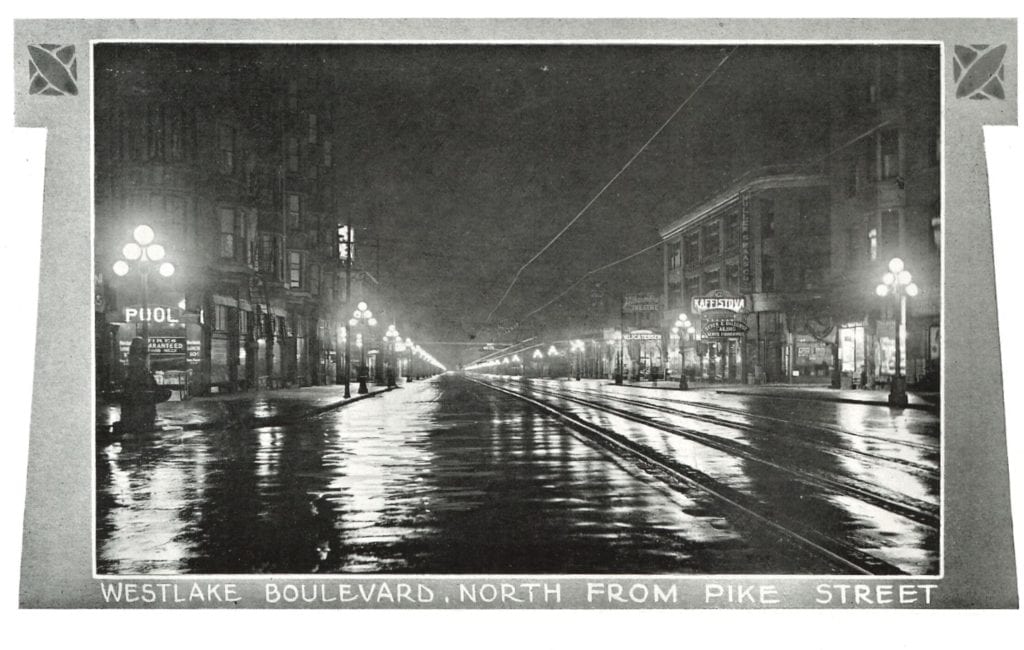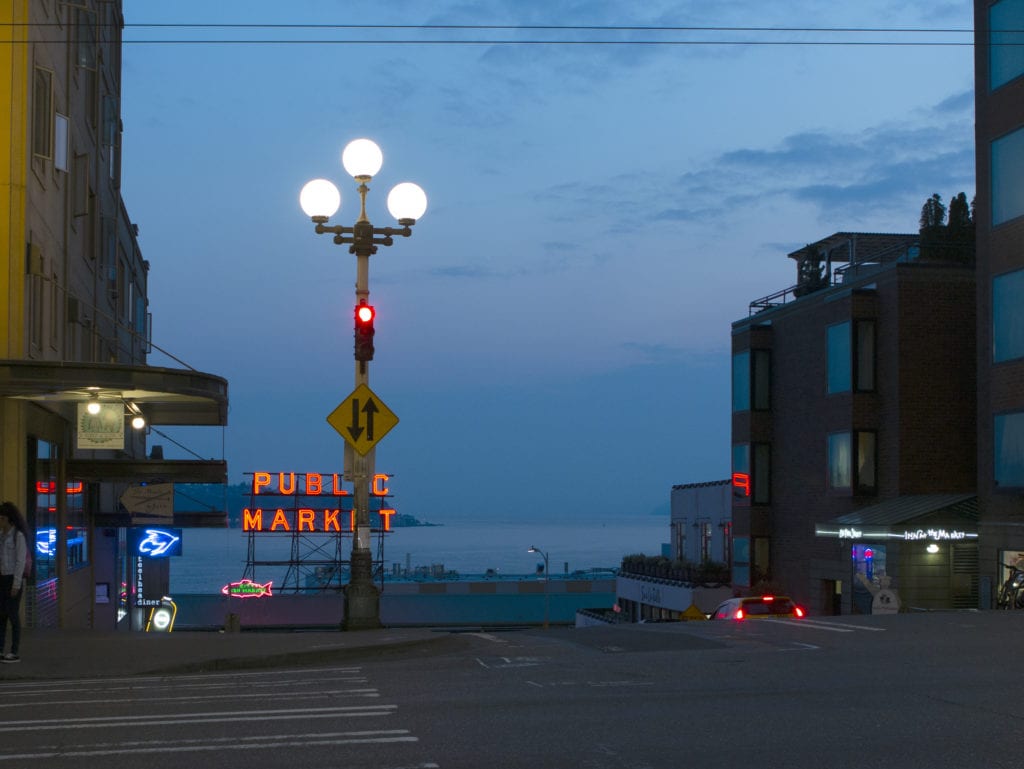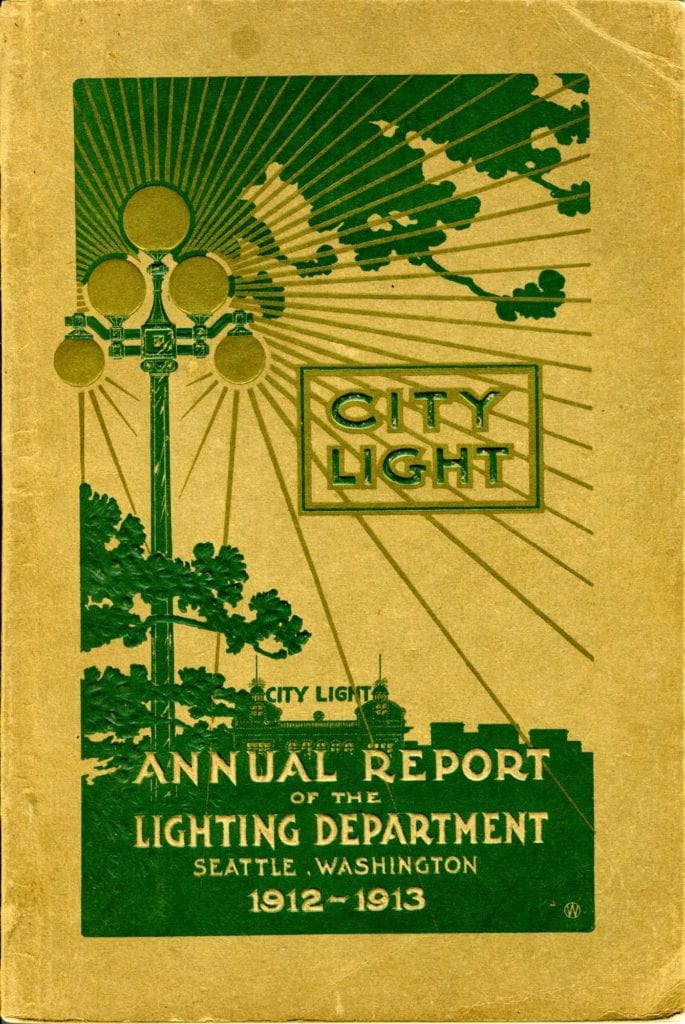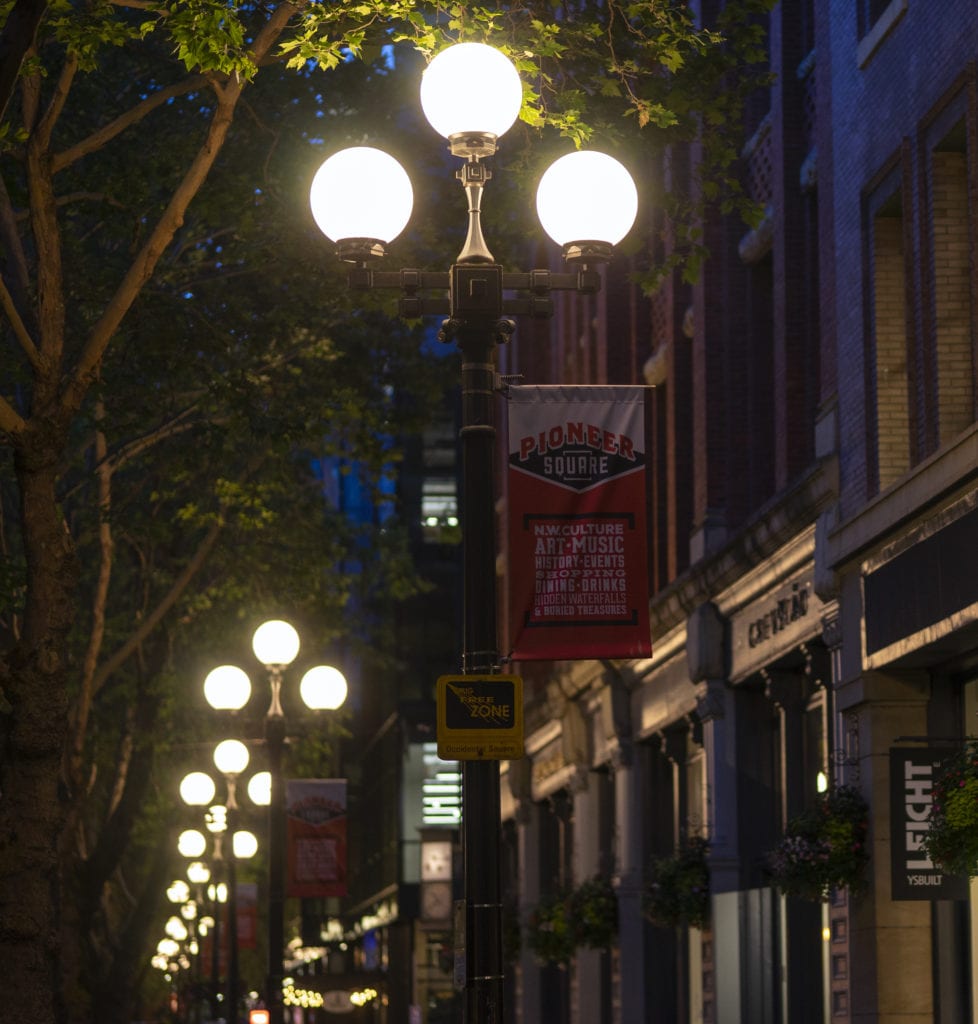
This story was published originally in the February 2021 issue of Northwest Public Power Association Bulletin Magazine. Please note: positions and titles of contributors may have changed since the time of original publication.
There are few constants in Seattle’s history. Perhaps the only real constant is how Seattle changes and progresses. It’s a city that, in its nascent development, literally moved mountains with its multiple regrade projects to create a new downtown landscape. When the city burned nearly to the ground in the Great Seattle Fire in 1889, the townspeople built over the charred remains to create some of its most storied neighborhoods.
It is also a city that cherishes the relics of its past. Like the Space Needle’s recent facelift, Seattle appreciates a modern upgrade to its municipal monuments.
In late 2017, Seattle City Light (City Light) took on the immense challenge of upgrading one of its own signature monuments by converting the city’s 2,000+ downtown globe streetlights from High-Pressure Sodium to Light-Emitting Diode (LED). While the iconic spherical-style light design has taken on different iterations over time, the design has been an integral part of Seattle’s downtown identity dating back to the utility’s founding more than a century ago.
After a change in design from the 1930s to the late 1960s, the globe light design returned to downtown Seattle in the 1970s. By the late 2010s, the lights were a burden to repair. The globes themselves began to age and required extensive maintenance. This aging infrastructure left downtown dotted with darkness, creating a public safety issue. A project of this magnitude required broad-range community involvement while finding a manufacturer whose lighting technology could meet the utility’s requirements.

Upgrading such an important piece of City Light and Seattle’s identity while preserving its historical significance required transparency from the utility and vast public input from residents and passers-by, along with approval from local historical societies.
The challenges were significant, but City Light was up to the task.
City Light’s Carol Anderson, who has now since retired from the utility, was the first project manager for the globe streetlight conversion project. She began to lay the framework, working with vendors, and developing a proposed timeline for the project. When Kevin Gorman joined City Light in 2017 as a temporary employee, the conversion project was in an early phase. It quickly became his main focus as he was made project manager following Carol’s retirement. It was clear to Kevin from the beginning that a robust community-focused approach was essential for the globe lights to shine brightly once again.
“This type of work was still fairly new to me at the time, so I wanted to hear what the community wanted,” Kevin said. “But I did acknowledge that the dissonance between the utility’s requirements and the expectations of the community could have a damaging effect on the final product.”
As the project began to take shape, Kevin partnered with City Light Sr. Public Relations Specialist Hernann Ambion, who specializes in community outreach, to develop and implement an outreach plan. The objective was to generate community buy-in and garner feedback throughout the project.
In early 2018, City Light launched its first pilot survey in Seattle’s historic Pioneer Square neighborhood, which included two designs from different manufacturers. The new fixtures were evaluated for appearance, historical integrity and light levels. The lighting was also required to meet City Light standards and the Seattle Department of Transportation’s minimum light level and uniformity guidelines. The utility planned to compile public feedback to decide which fixture was the best fit. Kevin and Hernann also shared the survey with the Alliance for Pioneer Square and Pioneer Square Historic Preservation Board to get a pulse of how the new LEDs fit in a neighborhood known for protecting its history.
The feedback was overwhelmingly negative.
Survey respondents, both business owners and community members alike, thought the lighting temperature, which determines the color of the emitted light, and brightness were too harsh and intrusive.
“This is why we ask for this kind of feedback, positive or negative,” Hernann explained. “This isn’t always the fun part of our work, but as a public utility, we need to know when we’ve missed the mark for our customers and improve where we can.”
Following the survey, Kevin began to look for new lighting solutions and rethink the decorative lighting standards. That’s when City Light revisited the proposed lighting technologies, including the omnidirectional LED OmniMax light designed by Evluma in Renton, Wash.
Little did Kevin and the team at City Light know that the idea of converting a historic globe light design was an innate piece of Evulma’s vision for one of its products.
“For Evluma, the chance to convert globes like these to LED was part of the reason why we developed the OmniMax to begin with,” said Steve Mills, who was Evluma’s Regional Sales Manager for Washington at the time. “It was a project that the OmniMax inventors aspired to even as they were prototyping the design in our Rainier Avenue warehouse in Seattle years earlier. We felt that the OmniMax was the perfect solution where the historical characteristics of the decorative light need to be preserved.”
Because of the original proposal’s lighting standards, Evluma’s design didn’t fit the project scope. The negative feedback about the initial pilot’s lighting design encouraged Kevin and City Light to reconsider the project’s priorities. They realized that with new technologies comes the opportunity to create a better customer experience.
“In the past, communities have never been given a choice of preferences like light temperature. Utilities have used the technology that was available at the time, which is why we were still using High-Pressure Sodium lights with their garish orange glow,” Kevin said. “With the advancements in LED technology, you can now use a range of colors and temperatures while being efficient. That also allows you to think beyond the standards and consider the ambiance and match the lights’ surroundings. We realized that it was more important to find a manufacturer that was able to build an LED that lasted longer and provided a better light temperature.”
Kevin reevaluated the lighting standards, using the learnings from the survey and other industry research. It was clear to him that the current 4000 Kelvin color temperature standard for all lights in City Light’s service area was too broad given the variety of lights the utility uses, from decorative lights like the globes to arterial streetlights. As the team approached a new pilot survey, the decorative lighting standard was lowered to a warm 2700 Kelvin.

The new standard meant that Evluma’s proposal to convert the globe streetlights to OmniMax LED was back on the table. Evluma and City Light worked together to address other pain points identified in the survey, including creating a balanced, uniform glow from the globe lights. Kevin was thoroughly impressed with Evluma’s approach to the project.
“Evluma was so personal, and it was great to have them in our backyard here in Washington state,” Kevin explained. “We had the chance to visit their manufacturing plant, and the experience changed my view on the future and understanding of LEDs. Their team worked closely with us as we continued to list our concerns. It was a truly positive experience.”
In August 2018, City Light launched the second pilot in Pioneer Square and Pike Place Market. The area around the market, which has an estimated 10 million visitors annually, required an additional level of community outreach and engagement for the project. This new audience challenged Hernann and Kevin to rethink the outreach process to receive feedback from tourists, commuters who work downtown and people who live in the area.
Others have a vested interest in preserving the iconic history of the globe streetlights and their place in Seattle lore. In the 1910s, “The Father of City Light”, J.D. Ross, sketched out the design for the globe streetlights. In City Light’s Annual Report of the Lighting Department Seattle, WA in 1911, the utility lauded the globe design, writing: “Seattle’s cluster lighting system is one of the finest in existence and is generally admired by tourists and visitors from all parts of the country…This design gives a beautiful effect of festoons of decorative lights along the sidewalks, and at the same time secures a uniform illumination on all parts of the street.”

The original 80-candlepower tungsten lamps came in 5-globe, 3-globe, and 1-globe designs on matching ornamental poles. By the mid-1920s, the streetlights had slowly degraded, and the utility modernized to an acorn-style light by the 1930s. When the city began to revisit updating the streetlight system downtown in the 1970s, the newly-formed Pioneer Square Historic Preservation Board took advantage to advocate for the original globe streetlights to illuminate downtown once again.
In 2018, the Pioneer Square Historic Preservation Board and other downtown organizations wanted to ensure that the globe streetlights met their standards and would accurately resemble the original design. Kevin and Hernann again reached out to the Alliance for Pioneer Square and Pioneer Square Historic Preservation Board, along with the Downtown Seattle Association and the Pike Place Market Historical Commission. The team encouraged these groups to view the proposed lights for themselves and participate in the survey. Along with a team from Evluma, Kevin attended board meetings to provide a “show and tell” presentation on the conversion project with an illuminated globe light. This extra outreach effort, a first for a City Light decorative lighting project, helped these stakeholders envision the project in a personal way.
This time, Kevin and Hernann received an overwhelming amount of positive reactions to the proposed globe lights and twice as many survey responses. The journey to get to this point was arduous, but for Hernann, this is what is required for such an important project.
“The Pike Place and Pioneer Square commissions, while both in downtown, have their own needs and preferences. They each have their history, and we needed to honor that while addressing the specific needs of each neighborhood,” Hernann said. “The amount of outside interest in this project was unlike any other project I’ve worked on at City Light. We knew they would play a critical role in determining the success of this project. The first pilot reminded us that lighting is important to many people. It challenged us to think outside the box with how we communicate to such a broad but vital audience.”
Armed with the community’s approval and support, City Light began converting the globe streetlights light-by-light, street-by-street in the spring of 2019. The utility hired Potelco to convert the lights, replacing the globes, the bulbs and other interior components to modernize each fixture while maintaining its historic ornamental exterior. Since the conversion work was done at night to avoid traffic disruptions, Hernann and City Light’s Communications team notified media to increase awareness of the project. Curious community members even posted photos of the conversion project on Instagram.
All told, City Light converted 2,281 globe lights to LED. The final light was replaced in March 2020. Today, Kevin continues to receive positive feedback about the lights, and the extensive outreach done to ensure that every voice was heard in the process.
While more than a century span between their installation and modernization, Seattle’s globe lights were designed to be enjoyed by all and be a luminous accent to the downtown cityscape. Now, a new generation can admire these lights the way they were intended to be enjoyed when originally installed.
Hernann and Kevin both agree that this globe streetlight conversion was not only their favorite project to work on; it also impacted how they will approach future projects. The lessons learned will stay with them, and so will the project’s ultimate focus: the people.
“This project has become one of our most successful community outreach efforts at City Light,” Hernann said. “It’s been one of the highlights in my career and something we will all benefit from for years to come.”

